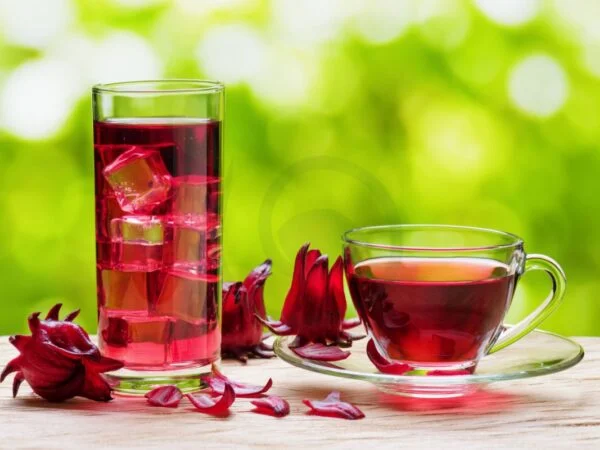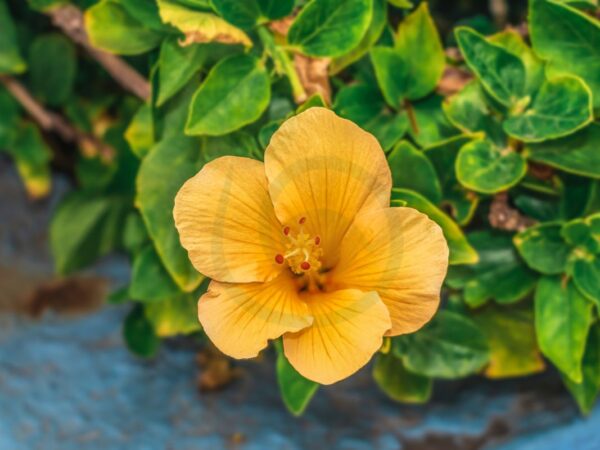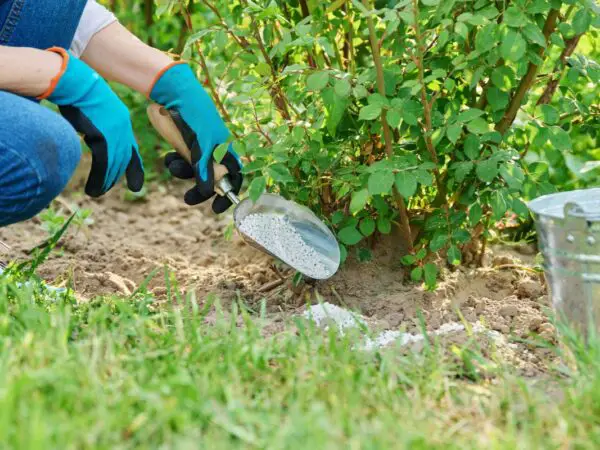Curious about how to make hibiscus tea from dried flowers? Dive into this guide for a step-by-step journey to crafting a refreshing and vibrant cup of hibiscus tea right at home. Embrace the art of transforming dried hibiscus flowers into a delightful brew that not only tantalizes your taste buds but also offers a myriad of health benefits.
Wondering about the secrets behind brewing the perfect hibiscus tea with dried flowers? Unravel the mysteries as we unveil the simple yet effective techniques to infuse flavor and goodness into every sip. From selecting premium dried hibiscus flowers to mastering the brewing process, this comprehensive guide has you covered. Elevate your tea experience with our expert tips and tricks.
Key Takeaways
-
Make Your Own Hibiscus Tea: Enjoy the process of creating hibiscus tea from dried flowers at home, connecting with its origins and flavors.
-
Prioritize Quality Ingredients: Use high-quality dried hibiscus flowers and simple, natural ingredients for a delicious and authentic tea experience.
-
Follow a Simple Brewing Process: With a step-by-step guide, brew hibiscus tea easily at home, experimenting with different brewing times for varied flavors.
-
Enhance the Flavor Creatively: Explore various flavor enhancements like citrus juices, spices, or sweeteners to customize your hibiscus tea to suit your taste preferences.
-
Embrace the Health Benefits: Discover the nutritional advantages of hibiscus tea, such as its potential to lower blood pressure and provide antioxidants for overall well-being.
-
Perfect Your Recipe: Experiment with brewing techniques and ingredient combinations to find your perfect hibiscus tea recipe that suits your palate and preferences.
Hibiscus Tea Origins
Understanding Hibiscus
Hibiscus tea is typically made from dried hibiscus flowers, with the most common varieties being Hibiscus sabdariffa and Hibiscus rosa-sinensis. These vibrant flowers are known for their tart flavor, making a refreshing and tangy beverage. In various cultures, hibiscus holds symbolic significance. For example, in Egypt, it's associated with fertility and love rituals.
When it comes to traditional uses, hibiscus has a rich history beyond tea. In Mexican culture, hibiscus flowers are used to make "agua de jamaica," a popular drink known for its deep red color and floral taste. In African countries like Nigeria, hibiscus is brewed into a tangy drink called "Zobo," often infused with ginger and cloves for added flavor.
Edible Parts
The most commonly used part of the hibiscus flower for tea-making is the calyx, which is the outer part that forms after the petals fall off. The calyx is rich in essential nutrients like vitamin C, antioxidants, and minerals. Consuming hibiscus petals offers various health benefits, including supporting heart health and aiding digestion.
In cooking, hibiscus flowers can be used in multiple ways due to their versatility. Apart from making tea, dried hibiscus petals can be incorporated into dishes to add a unique tanginess. They can be used to infuse desserts like sorbets or even incorporated into savory dishes like salads or sauces for a touch of floral acidity.
Ingredients Needed
Dried Flowers
Drying hibiscus flowers for tea is simple. Pick fresh flowers and remove the petals. Spread them in a single layer on a tray or drying rack. Allow them to air dry completely, which usually takes 1-2 weeks. Once dried, store them in an airtight container in a cool, dark place. Dried hibiscus flowers can be found at local health food stores or online retailers. Using dried flowers for tea offers convenience and a longer shelf life compared to fresh ones.
Optional Add-ins
Enhance the flavor of hibiscus tea with various add-ins like lemon, ginger, or mint. These ingredients not only add depth but also balance the tartness of hibiscus. Lemon provides a citrusy zing, ginger adds warmth, while mint brings a refreshing twist. Experiment with different combinations to find your favorite mix. Remember to adjust the quantities based on personal preference to create a unique and personalized hibiscus tea blend.
Step-by-Step Brewing
Brewing hibiscus tea from dried flowers is a simple process that starts with steeping the flowers in boiling water. This step is crucial as it allows the flowers to release their vibrant color and rich flavor. The ideal brewing time for hibiscus tea is around 5-7 minutes, ensuring a perfect balance of taste. Make sure to maintain the water temperature at approximately 200°F (93°C) for optimal results.
To make hibiscus tea from dried flowers, begin by boiling water in a kettle. Once the water reaches the desired temperature, pour it over a handful of dried hibiscus flowers in a teapot or cup. Let the flowers steep for 5-7 minutes to extract their essence fully. Adjust the sweetness of your tea by adding honey or sugar according to your preference.
-
Adjust sweetness level by varying honey or sugar amounts
-
Experiment with steeping time for different flavor intensities
-
Avoid overcrowding the teapot with too many flowers
Remember, the key to a perfect cup of hibiscus tea lies in allowing the flowers to steep adequately and adjusting the sweetness level to suit your taste preferences.
Flavor Enhancements
Recipe Variations
Hibiscus tea offers a versatile canvas for flavor experimentation. By adding maple syrup as a sweetener, you can balance the tart flavor of the hibiscus flowers. Another option is to infuse the tea with citrus fruits like oranges or lemons to enhance its zesty notes. For a refreshing twist, consider mixing in fresh mint leaves or ginger for added complexity.
Get creative with your hibiscus tea by incorporating spices like cinnamon or cloves for a warm and aromatic touch. Blending in fruits such as berries or apples can introduce a fruity undertone to the beverage. These variations not only add depth to the tea's taste but also elevate its overall drinking experience.
Encourage readers to experiment with different ingredients based on their preferences. From herbs to spices and fruits, the possibilities are endless when it comes to customizing hibiscus tea flavors. Embrace innovation and tailor your brew to suit your unique palate.
Different Varieties
Dive into the world of hibiscus tea varieties that span across different regions globally. Explore the distinct flavor profiles of each variety, ranging from floral and slightly tangy notes to more robust and earthy undertones. Mexican hibiscus tea, known for its deep red hue and rich flavor, stands out for its intense tartness compared to other varieties.
Compare these diverse varieties by considering their color, aroma, and taste characteristics. Egyptian hibiscus tea, popular for its vibrant crimson color and bold flavor, offers a slightly sweeter profile than other types. Nigerian zobo drink features a unique blend of hibiscus flowers, ginger, and pineapple for a tropical twist.
Highlighting regional differences in hibiscus tea preparation sheds light on the cultural significance attached to this beverage. Whether you prefer the bold flavors of Caribbean sorrel drink or the delicate notes of Thai roselle tea, each variety showcases a distinctive take on this beloved herbal infusion.
Health and Nutrition
Health Benefits
Consuming hibiscus tea can offer various health benefits. It supports heart health by helping to lower blood pressure levels. The tea also aids in digestion, reducing the risk of digestive issues. Hibiscus flowers contain potent antioxidants that help combat oxidative stress in the body.
-
Supports heart health by lowering blood pressure
-
Aids digestion and reduces the risk of digestive issues
-
Contains potent antioxidants to combat oxidative stress
Nutritional Value
When it comes to nutritional content, hibiscus tea is a great choice. It is low in calories and sugar compared to many other beverages, making it a healthier option. Hibiscus flowers are rich in essential vitamins and minerals, including vitamin C, iron, and antioxidants.
-
Low in calories and sugar compared to other beverages
-
Rich in essential vitamins and minerals like vitamin C and iron
-
Contains antioxidants that promote overall health
Perfecting the Recipe
Tips for Perfection
Achieving the perfect brew of hibiscus tea requires attention to detail. To balance the tartness of the tea, consider adding natural sweeteners like honey or agave. Adjust the brewing time and temperature to enhance the flavor profile – a longer steeping time can intensify the taste.
Customizing the Recipe
Encourage readers to customize their hibiscus tea by experimenting with various elements. Adjust sweetness levels by adding more or less sweetener based on personal preference. Explore different flavor profiles by incorporating herbs like mint or spices such as ginger for a unique twist.
Beyond Tea
Refreshing Ideas
When serving hibiscus tea, consider adding a splash of fresh lemon for a zesty twist. Incorporate ice cubes made from the tea itself for a flavorful and refreshing touch.
For a unique presentation, serve hibiscus tea in elegant glass cups with edible flowers as garnish. This not only enhances the visual appeal but also adds a subtle floral note to the experience.
Pair your hibiscus tea with complementary snacks like light pastries or fruit salads. The tea's vibrant color and tangy flavor can beautifully complement sweet treats or savory bites.
Other Uses
Beyond being brewed into tea, hibiscus flowers can be used in various culinary creations. Try incorporating dried hibiscus petals into homemade jams or jellies for a floral infusion.
Experiment with adding hibiscus flowers to salad dressings for a unique burst of flavor and color. Their tartness can balance out rich ingredients like olive oil and vinegar perfectly.
The versatility of hibiscus extends to desserts too. Consider using hibiscus in recipes for sorbets, popsicles, or even as a colorful topping for cakes and cupcakes.
DIY Drying Process
Drying Flowers
Drying hibiscus flowers at home is a simple process that involves air drying or using a dehydrator. To air dry, hang the flowers upside down in a dark, well-ventilated area until they are brittle. For a dehydrator, set it to a low temperature and leave the flowers inside until they are completely dry.
To preserve the color and flavor of dried hibiscus flowers, ensure they are dried thoroughly to prevent mold growth. Store them in an airtight container away from sunlight and moisture. Adding a silica gel packet can help maintain their freshness.
Using dried flowers in cooking and beverages offers numerous benefits. They add a unique flavor profile to dishes like salads, desserts, and even meat marinades. In beverages, dried hibiscus flowers create vibrant teas, cocktails, and infused waters that are both refreshing and visually appealing.
Storage Solutions
Storing Tea Properly
When storing hibiscus tea in an airtight container, ensure it's completely dry to prevent moisture. Place the container in the fridge to maintain freshness. To avoid flavor degradation, keep the tea away from strong-smelling foods.
Remember to seal the airtight container tightly after each use to preserve the tea's flavor. Storing hibiscus tea in the fridge helps retain its quality and taste. Prevent exposure to heat or light to maintain the tea's vibrant color and aroma.
To prevent flavor degradation, store hibiscus tea away from humidity and direct sunlight. Keeping it in an airtight container in the fridge ensures longevity. Avoid placing the tea near pungent items like spices or onions.
Potential Considerations
Side Effects
Consuming hibiscus tea may lead to lower blood pressure, so individuals on medication should monitor their levels. It can also cause stomach discomfort in some people.
For those with low blood pressure, hibiscus tea might exacerbate the condition, leading to dizziness or lightheadedness. Moderation is key to prevent adverse effects.
Individuals with pregnancy concerns should consult a healthcare provider before consuming hibiscus tea due to its potential impact on pregnancy outcomes.
Moderation is crucial for everyone, especially those with existing health conditions like diabetes or hypertension, as excessive consumption can worsen these conditions.
Summary
You've learned all about making hibiscus tea from dried flowers, from its origins to perfecting the brewing process and beyond. Understanding the ingredients, health benefits, and flavor enhancements has equipped you to create a delightful and nutritious beverage. Remember to experiment with different flavors and methods to find what suits your taste buds best.
Explore the DIY drying process and storage solutions to ensure a fresh supply of hibiscus tea whenever you crave it. Consider potential considerations like allergies or medication interactions before indulging in this vibrant drink. Now that you're armed with knowledge, go ahead, brew yourself a cup of homemade hibiscus tea and savor the goodness it brings into your day.
Frequently Asked Questions
How can I make hibiscus tea from dried flowers?
To make hibiscus tea from dried flowers, follow these steps:
-
Boil water.
-
Add dried hibiscus flowers.
-
Steep for 5-10 minutes.
-
Strain and sweeten if desired.
Can I store dried hibiscus flowers for a long time?
Yes, you can store dried hibiscus flowers in an airtight container in a cool, dark place for up to one year.
Are there any health benefits of drinking hibiscus tea?
Hibiscus tea is rich in antioxidants, may help lower blood pressure, improve liver health, and aid in weight loss when combined with a healthy diet and exercise.
What are some flavor enhancements for hibiscus tea?
You can enhance the flavor of hibiscus tea by adding ingredients like honey, ginger, mint leaves, or citrus fruits like lemon or orange.
How do I dry hibiscus flowers at home?
To dry hibiscus flowers at home:
-
Pluck fresh flowers.
-
Remove petals and spread on a tray.
-
Place in a well-ventilated area until fully dry.
-
Store in an airtight container.
Image Source: Paid image from CANVA




